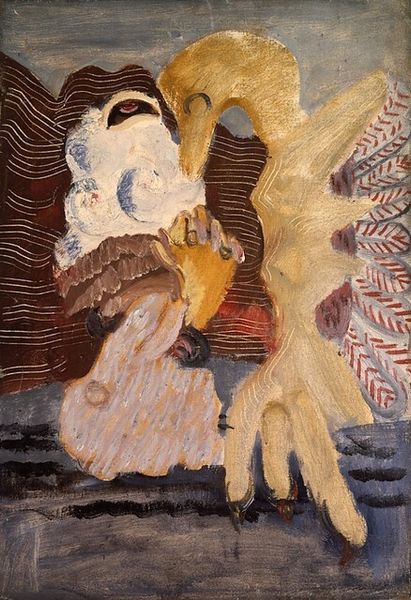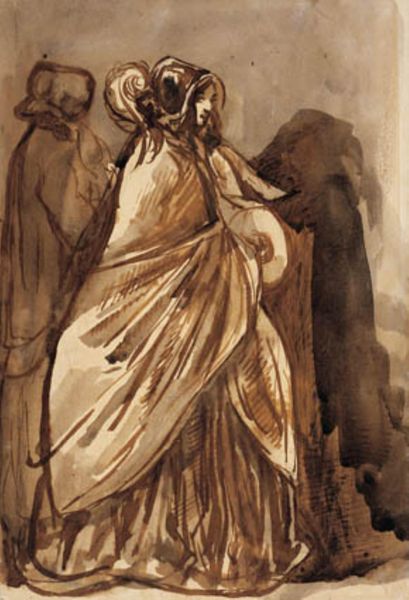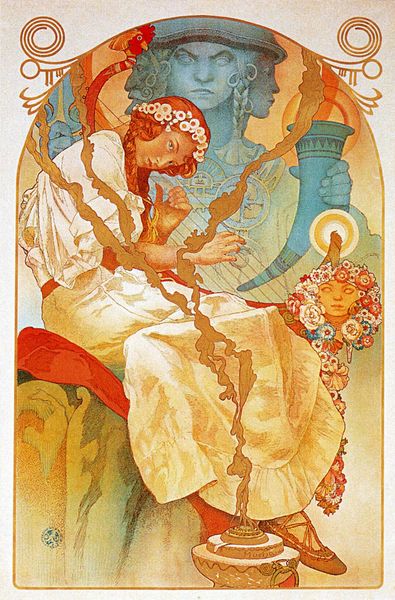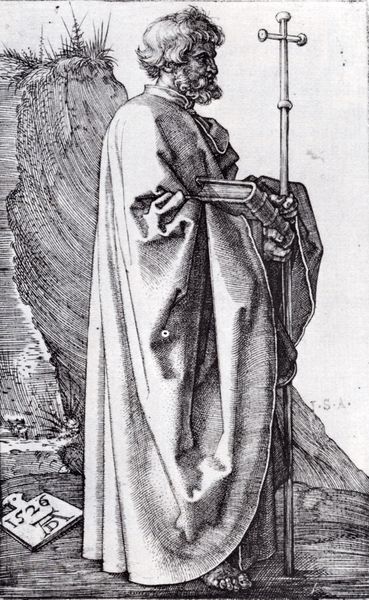
painting, oil-paint
#
portrait
#
painting
#
oil-paint
#
oil painting
#
history-painting
#
pre-raphaelites
#
academic-art
#
portrait art
Copyright: Public domain
Curator: Standing before us is John Ruskin’s "Zipporah, after Botticelli," painted in 1874. Editor: There’s a definite sense of restrained elegance here. The muted palette and Zipporah’s downwards glance suggest quiet contemplation. Curator: Ruskin's portrayal, though derivative, reflects the Pre-Raphaelite interest in history, and in this case the reclaiming of Botticelli's sensibilities. Zipporah's figure becomes a canvas to explore Pre-Raphaelite themes related to idealized female beauty. Editor: And you see how he’s focused on rendering the details of her garments, right? The folds of the cloth, the band around her waist - almost tactile, you can feel the material and see the construction. Look at the roughness in rendering her feet, too. The raw earthiness is almost sculptural in how it asserts the handmade nature of this painting. Curator: Absolutely. Within the Victorian context, it also brings forth an interrogation of femininity and power. Zipporah, as Moses's wife, exists within a biblical narrative yet here embodies a unique agency by way of the artist's attention to her emotions. Ruskin seemingly situates her as an individual contemplating her identity. Editor: Interesting you mention that, as it emphasizes her connection to labor, too, or at least its tools. She carries a sort of weaving tool with unrefined, unspun wool - clearly symbolic, perhaps. But it directs my eye immediately toward those very material processes of textile production that defined so much work at this time. Ruskin seems less focused on *how* her representation can empower and more intent on what means produce its image. Curator: I concede your point on materiality, but also see how it all converges into that specific rendering of the subject. And I appreciate Ruskin directing attention, not to patriarchal biblical interpretations, but into Zipporah’s internal experiences, inviting a more egalitarian consideration. Editor: Perhaps he is suggesting how gender is embodied not simply through identity, but through labor, material means, and processes—that would really make him progressive for his time, indeed! Curator: Exactly, a painting that manages to speak through and beyond historical interpretations to contemporary concerns of gender and identity. Editor: Agreed. Seeing how attentively the materiality intersects with gender gives me more to think about its relation to class structures.
Comments
No comments
Be the first to comment and join the conversation on the ultimate creative platform.













